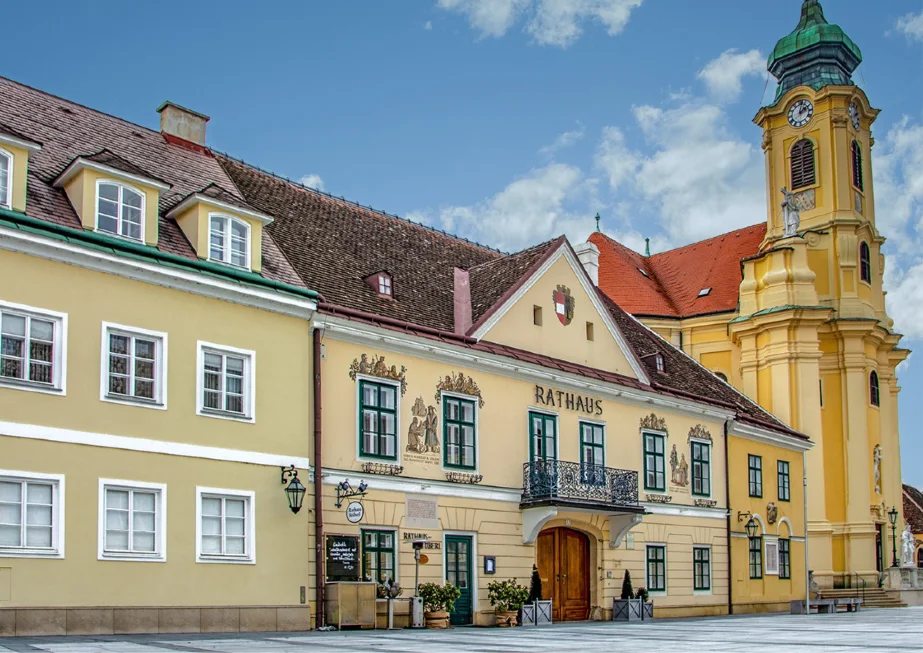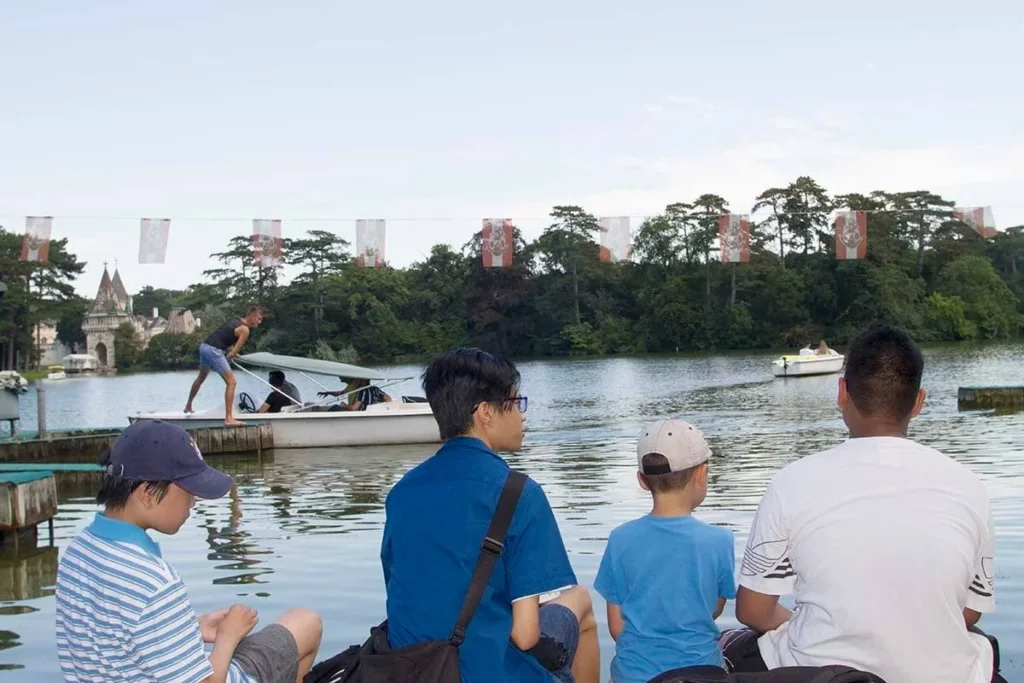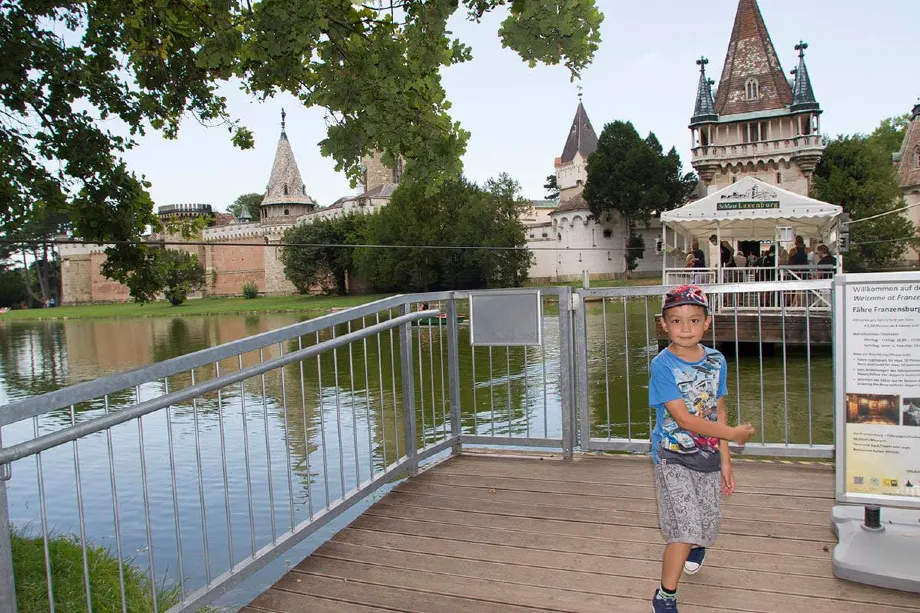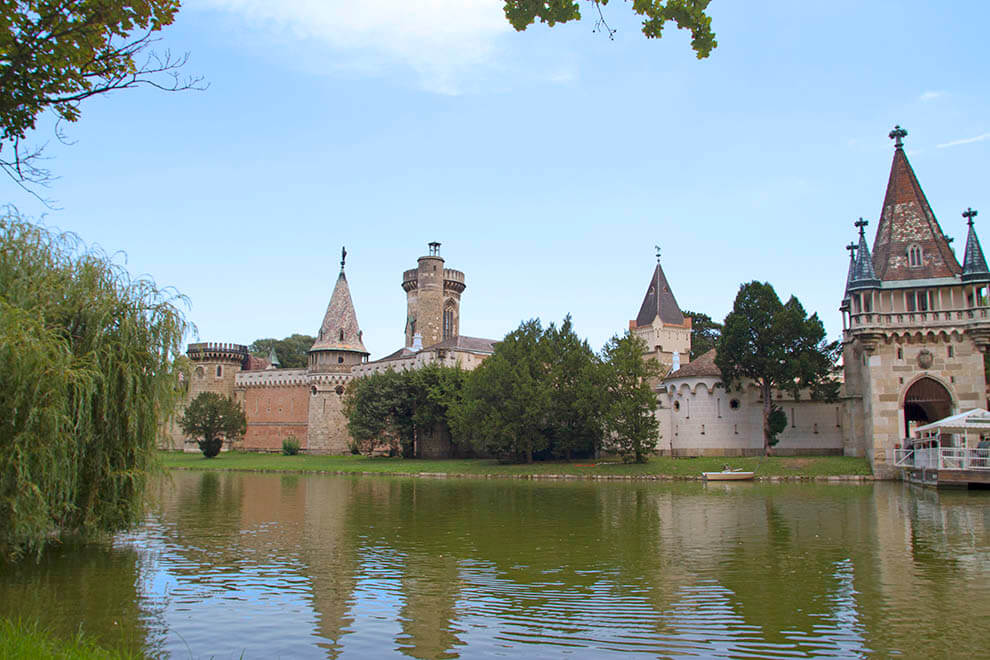
Exploring Laxenburg in Lower Austria : Town Hall and plaza
The lockdown was finally lifted, while it’s a good thing, we’re still being very careful when going out.
We arranged a meet up with friends outside of the city. We explored a market town in the district of Mödling, in the Austrian state of Lower Austria called Laxenburg, more particularly the castle park. It’s about 20 km (12 mi) south of Vienna, and is famous for the Laxenburg castles, another summer retreat of the Habsburg monarchs beside Schönbrunn.
It takes about half an hour from Vienna’s Hauptbahnhof (Main train station) by bus or by car. Like Schönbrunn, the architecture is mostly in ochre yellow, full of trees, and a lot of spaces to walk about and have picnic at.
Table of Contents
Laxenburg Castle Park for families
The Laxenburg Castle Park is open daily all year round and is worth a visit at any time of the year. For example, many families come back every autumn, when many paths are strewn with chestnuts. The kids like pony rides especially, which they can enjoy on Saturdays, Sundays and public holidays when the weather is nice. The stand for the pony carts is located in the entrance area of the park next to the palace theater.
The Laxenburg Castle Park is one of the 56 gardens in Austria that is listed as Denkmalschutz (monument protection) with regard to its garden design ideas. The aim of the park maintenance work is to secure the park in its existing form and to carefully bring it back to its original design idea from around 1850.

Exploring Laxenburg in Lower Austria : the Laxenburg-Express – Bummelzug (pick-up train)
Going Around
Inside, you can ride the Laxenburg-Express, a Bummelzug (pick-up train), and it will take you around the palace grounds and garden faster. The Laxenburg Express runs from the end of March to the beginning of November between 10 a.m. and 6 p.m. There are entry and exit points at the main park entrance (near the palace theater), at the boat rental (near the palace pond/pond buffet) and at the ferry station at the Franzensburg.
But our purpose was to walk since we haven’t been out a lot the past 3 months! There were creeks along the way, so we had to pass through small bridges and look out into the water to check if there’s fish, and there were if you look intently.

Exploring Laxenburg in Lower Austria : By the lake
Lake
The Laxenburg Lakes, also known as the Laxenburg Ponds or simply the Lake at Laxenburg, are a group of artificial lakes. The lakes were created in the 18th century as part of the extensive gardens and parklands surrounding the Laxenburg Palace, which was a former imperial residence. The area became a popular recreational area for the Austrian nobility and remains a popular destination for locals and tourists today.
The little lake surrounding the castle is a relaxing view after all the walking, there is also the possibility to rent boats and explore the pond. There are also lounge chairs, beach chairs to relax in and mini-stores you can buy drinks from.

Crossing the Little Lake
The largest lake in Laxenburg is called the “Großer Teich” (Big Pond), which covers an area of about 42 hectares. It is surrounded by beautiful parkland with walking paths and is a great spot for picnicking, strolling, or simply enjoying nature. The lake is also used for boating, and visitors can rent rowing boats or pedal boats to explore its tranquil waters. In addition to the Großer Teich, there are several smaller lakes and ponds in the Laxenburg area, such as the Franzensburg Pond and the Blauer See (Blue Lake). These smaller bodies of water add to the charm and beauty of the parklands.

Exploring Laxenburg in Lower Austria : Waiting for the boat so we can cross to the castle
Castle
The Franzensburg (castle) stands on a small island in the middle of the palace park.
Franzensburg Castle was built between 1801 and 1836 under the reign of Emperor Franz I of Austria. It was named after him to commemorate his name and legacy. The castle was designed in the style of a medieval fortress, featuring turrets, battlements, and a moat. The construction of the castle was commissioned by Emperor Franz I as a private retreat for himself and his family. The castle complex includes a central tower surrounded by four corner towers, which are connected by walls. The interior of the castle houses various rooms and chambers, some of which are decorated with period furniture and artwork. It provides a glimpse into the lifestyle and taste of the Austrian nobility during the 19th century.
A ferry takes parents and children across to Franzensburg. The Franzensburg may only be visited with a guided tour. These tours take place daily from the end of March to the beginning of November at 11 a.m., 12 p.m., 2 p.m. and 3 p.m. Among other things, the castle guides are specially trained for informing children and youth tours of all ages. (It was when my older boy was in 4th grade when we did a tour of the castle.) A special guided tour takes families up the High Tower and over the roofs of the Franzensburg, starting daily at 1 p.m. and 4 p.m.

Exploring Laxenburg in Lower Austria : Laxenburg castle from across the lake
The castle and park are open to the public, allowing visitors to take guided tours of the castle or explore the grounds independently. It’s a popular destination for both locals and tourists, providing a tranquil and historic setting for leisurely walks, picnics, and cultural experiences. Laxenburg offers a peaceful and picturesque setting for outdoor activities and relaxation. It’s a popular place for locals to escape the city and enjoy nature, and it’s easily accessible from Vienna, making it a popular day trip destination.





